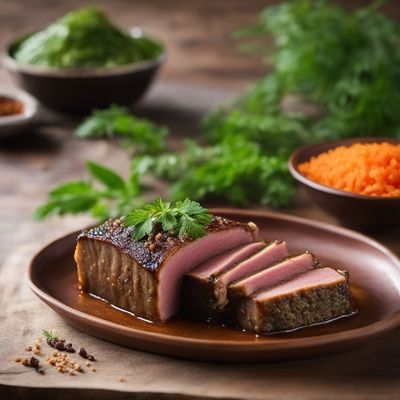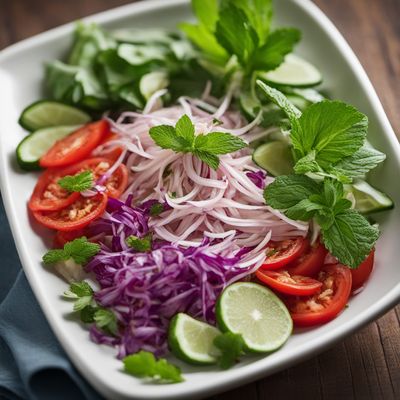
Ingredient
Spanish salsifies
The Hidden Gem of Root Vegetables
Spanish salsifies are long, slender root vegetables with a dark brown, almost black skin. They have a delicate, nutty flavor and a creamy white flesh. The texture is similar to a parsnip, but slightly more fibrous. When cooked, they become tender and develop a rich, earthy taste.
Origins and history
Spanish salsifies have been cultivated in Spain for centuries and were highly regarded by the ancient Greeks and Romans for their medicinal properties. They were later introduced to other parts of Europe and became a staple in traditional Spanish cuisine. Today, they are enjoyed in various dishes around the world.
Nutritional information
Spanish salsifies are low in calories and a good source of dietary fiber, vitamin C, and potassium. They also contain small amounts of iron and calcium.
Allergens
There are no known allergens associated with Spanish salsifies.
How to select
When selecting Spanish salsifies, look for firm, unblemished roots with a smooth skin. Avoid any that are soft, shriveled, or have moldy spots. The smaller roots tend to be more tender and flavorful.
Storage recommendations
To store Spanish salsifies, remove any attached greens and place them in a perforated plastic bag in the refrigerator. They can be stored for up to two weeks. Alternatively, you can store them in a cool, dark place for a few days.
How to produce
Spanish salsifies can be grown in a home garden by sowing seeds in well-drained soil in early spring. They require regular watering and can be harvested after approximately 120 days when the roots are mature.
Preparation tips
Spanish salsifies can be boiled, steamed, roasted, or sautéed. Before cooking, peel the skin using a vegetable peeler and soak the roots in water with a splash of lemon juice to prevent discoloration. They can be used as a side dish, added to soups or stews, or incorporated into salads and gratins.
Culinary uses
Spanish salsifies are commonly used in Spanish and Mediterranean cuisines. They are often served as a side dish, pureed into soups, or used in salads and gratins. They pair well with ingredients like garlic, lemon, butter, and fresh herbs.
Availability
Spanish salsifies are commonly available in Spain and other European countries. They can also be found in specialty grocery stores or farmers markets in North America and other parts of the world.
More ingredients from this category

Skirrets
The Forgotten Root: Unveiling the Delights of Skirrets

Burdock, greater or edible
The Mighty Root: Unveiling the Culinary Wonders of Burdock

Scorzonera
The Hidden Gem Root

Salsifies
The Hidden Gem of Root Vegetables: Unveiling the Delights of Salsifies

Rampion roots
Rediscovering Rampion Roots
Recipes using Spanish salsifies

Phitti with Spiced Potato Filling
Savory Stuffed Phitti: A Delightful Twist on Traditional Indian Cuisine

Kazakh-style Foie Gras Terrine
Luxurious Kazakh Delight: Foie Gras Terrine with a Local Twist

Kurdish-Style Serabi
Savory Pancakes with Kurdish Flair

Cypriot-style Banana Blossom Salad
Tropical Delight: Cypriot Banana Blossom Salad

Antiguan Cold Plate
Tropical Delight Cold Plate

Arabian Spiced Rice with Roasted Chicken and Cucumber Salad
Saffron-infused Delight: Arabian Rice with Roasted Chicken and Refreshing Cucumber Salad